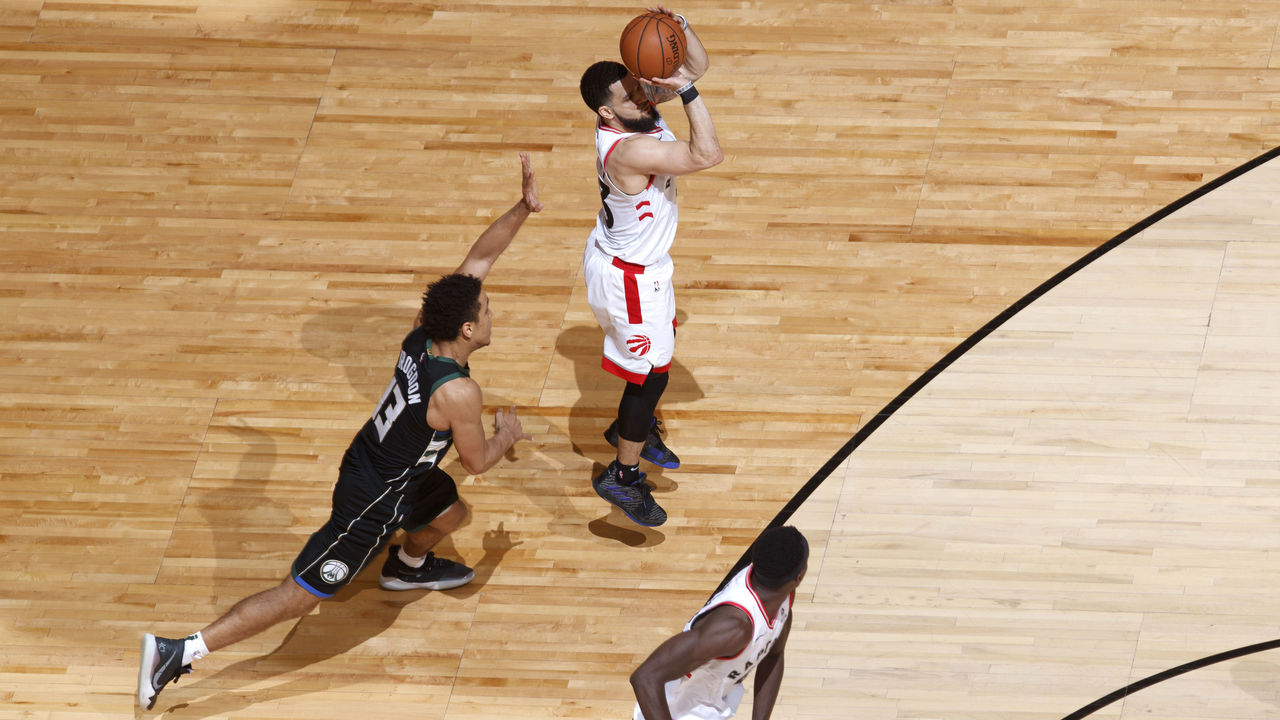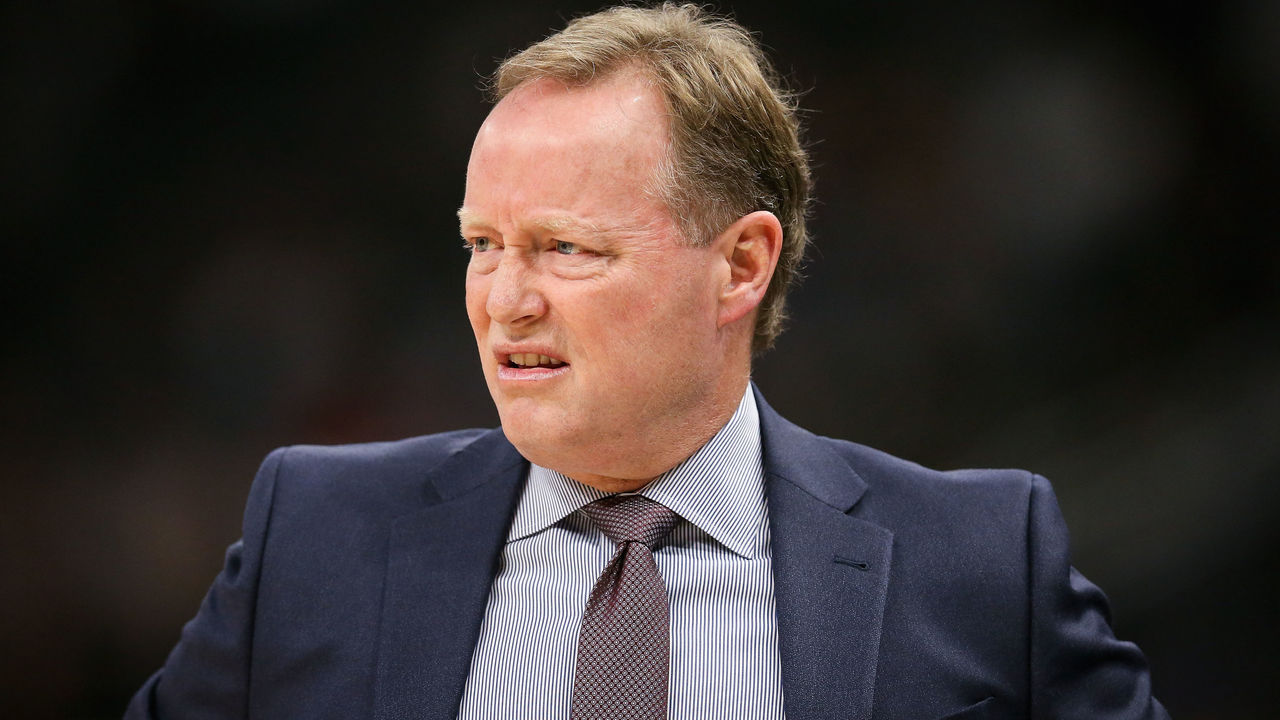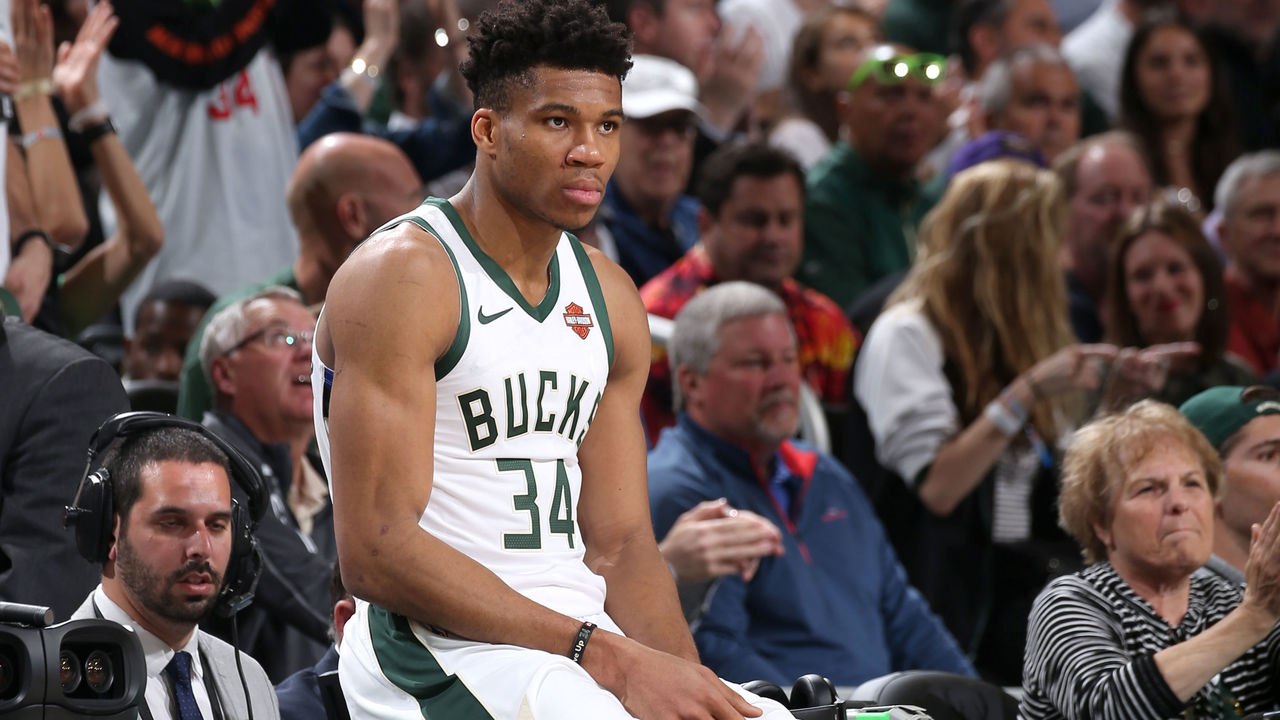How the Bucks came undone, and what comes next for Milwaukee
It's always sobering how abruptly a great team's season can come to an end in the playoffs.
This year's Milwaukee Bucks led the league with 60 wins while compiling the type of statistical profile not only befitting a champion, but an all-time juggernaut. When they took a 2-0 series lead in the Eastern Conference finals against the Toronto Raptors, it brought Milwaukee's overall record to 70-23.
The Bucks were on the precipice of a 3-0 stranglehold had a few more bounces gone their way in the double-overtime Game 3 thriller. Six nights later, their season was over.
The deeper a team goes in the postseason, the greater chance its fatal flaws become exposed. Such was the case for the Bucks, as every question skeptics had about their phenomenal season came to the forefront in less than a week.
How franchises respond to that season-ending adversity is where future champions sprout, or potential dynasties crumble. With that in mind, let's dig into how the Bucks came undone against the Raptors, and where they go from here.
Live by the 3, die by the 3
We're long past the days when the old adage that jump-shooting teams can't win championships held true. In fact, including this year's Warriors and Raptors, the last eight champions will all have ranked in the top nine in 3-point percentage.
The issue with the Bucks was that they were no ordinary jump-shooting team.
By empowering the gunners around Giannis Antetokounmpo to let it fly, coach Mike Budenholzer helped unlock a sleeping offensive giant while opening the floor for the Greek Freak. But although the Bucks finished second only to Houston in 3-point attempts, Milwaukee actually finished a pedestrian 14th in percentage of 3-pointers made.
The mediocre conversion rate made it perplexing to see so many people assume the Bucks' shooting woes against the Raptors would correct themselves over the course of the series.
Sure, Milwaukee's 31 percent success rate from deep in the conference finals was disappointing after the team shot 35.3 percent during the regular season and 35.4 percent in the first two rounds of the playoffs. But we're not talking about the Warriors here; an average shooting team, which is what the Bucks were, isn't immune to a two-week slump.
Credit the Raptors, too, who may have the only roster in the league capable of walling off the paint and recovering to shooters with the combination of speed and execution they displayed in the series. It also helps having the option to put Kawhi Leonard on Antetokounmpo, which turned the series for the Raptors.
To replicate and exceed the success of this past season, the Bucks don't need to shoot it less. They need to shoot it better.
For starters, Antetokounmpo has to become more of a threat from deep after shooting 25.6 percent on 2.8 3-point attempts per game this season. He doesn't need to become a 40 percent shooter, but he needs to approach a league-average success rate. If that happens, he might truly be the most dominant offensive player in the game.
Just becoming a more respectable jump-shooter from anywhere on the court would make him nearly unstoppable. Antetokounmpo shot 22 percent between three and 10 feet in the playoffs and was 12 percent between 10 and 16 feet. If he wasn't getting to the rim, he was hardly scoring, period.
If opponents can survive while sagging back against both Antetokounmpo and Eric Bledsoe - who posted a 41-24-71 postseason shooting split only months after signing a four-year, $70-million contract extension - the Bucks will continue to run into the kind of half-court mud they did against the Raptors. One of those two ball-handlers needs to make defenses respect their jumpers.
Beyond Antetokounmpo and Bledsoe, the Bucks' ability to continue what they started this year hinges on the free-agent trio of Brook Lopez, Malcolm Brogdon (RFA), and All-Star Khris Middleton. Those three alone accounted for more than 42 percent of Milwaukee's made 3-pointers during the regular season.
All three will be seeking hefty raises this summer, and Milwaukee doesn't own Lopez's Bird rights, making retaining him even tougher. Losing even one of them without replacing their shooting would be a big blow to the Bucks' offense. Milwaukee could also look for additional shooting to fit Budenholzer's system with the No. 30 pick in the draft.

The power of the three-ball came back to bite the Bucks on the defensive end, too.
Milwaukee's game plan all season was to take away shots at the rim, with Lopez often dropping back in pick-and-roll coverages and Antetokounmpo acting as a type of threatening rover. Even though the Bucks were content to concede a plethora of open jumpers - 36.3 3-point attempts, the league leader by a wide margin - they finished the season with the top-ranked defensive rating.
Perhaps it was only a matter of time until their luck ran out. The Raptors finally made the Bucks pay in the East finals despite struggling themselves from deep during the first two rounds. Toronto broke through by knocking down 37.4 percent on 38.3 attempts per game from beyond the arc in the six-game series.
The league's No. 1 defense obviously doesn't need a massive overhaul, especially if the Bucks return the same personnel, but they need to find a better balance between protecting the rim and providing improved resistance against perimeter shooters. It might take time to perfect during the season, but they'd be better equipped to survive against elite shooting teams come the spring.
Take Game 4 against the Raptors, for example. With Leonard nursing a left leg injury that had him limping up and down the court, Budenholzer's Bucks continued to stray from good shooters to swarm the clearly hobbled superstar. Leonard finished with only 19 points, but Toronto poured in 120 as a team.
If ever there was a night to adapt on the fly and abandon your usual defensive principles to suit the situation, Game 4 was it. Budenholzer's Bucks failed to do so.
Which brings up the next point ...
Coach Bud must be more flexible, lean on Giannis

The Bucks' transformation from first-round playoff fodder to No. 1 overall seed should land Budenholzer his second Coach of the Year award. But this isn't the first time his lack of flexibility has been called into question during the postseason.
In addition to the aforementioned defensive concerns, Budenholzer waited too long to reinsert Brogdon into the starting lineup against Toronto, and his stubbornness when it came to Antetokounmpo's playing time was baffling. A 24-year-old MVP candidate needs to play more than 37 regulation minutes per game during a tightly contested conference finals, and can't be watching from the bench as some of the series' defining moments play out.
Antetokounmpo rested six times in Game 6, including a 90-second stretch to open the fourth quarter that saw Milwaukee's five-point lead evaporate after the Raptors had closed the third quarter on a 10-0 run.
In Game 5, Antetokounmpo briefly exited the game to walk off a twisted ankle. When he was ready to return, Budenholzer failed to call one of his two remaining timeouts with a minute left in a two-point game to get his star player back on the court. With their best rebounder waiting helplessly at the scorer's table, the Bucks gave up an offensive rebound to Marc Gasol that led to an extra, precious point for Toronto.
Budenholzer maintained throughout the series that he needed Antetokounmpo at 100 percent for the minutes he was on the court. What he failed to grasp was that an extra few minutes of the Greek Freak at even 75 or 80 percent would've been worth more than any other Bucks player at full strength.
As Magic head coach Steve Clifford told reporters during Orlando's first-round loss to the Raptors, in the playoffs, "your best player tired is going to be better than his backup rested." Budenholzer clearly doesn't subscribe to that theory, doubling down on his own flawed logic after his team's elimination by commenting that if the Bucks can't win with Antetokounmpo playing 40 minutes, then the Raptors simply deserved it more.
Contrast that to Raptors head coach Nick Nurse, who kept a gimpy but effective Leonard on the court for 52 of 58 minutes in Game 3, and said before Game 6 that from a minutes perspective, the series-clincher was going to be a "whatever it takes game" for Toronto's stars.
Coaches, like players, can improve and evolve. Budenholzer's already good, but the Bucks will need him to be better and more adaptable when the stakes are highest in the future.
A fork in the road

Antetokounmpo gives the Bucks the type of transcendent star who paves the way to perennial contention, but championship windows tend to close quickly.
Retaining Middleton, Brogdon, and Lopez would be a good start in keeping that window open. It will be pricey, especially given the extension already signed by Bledsoe, but a non-destination market like Milwaukee has a far better chance of competing by retaining in-house talent - and exploring trades involving them later - than it does by making use of the potential cap space left when they move on.
Keeping the backbone of this 60-win team together, while addressing some of the aforementioned issues around the margins, would also go a long way in convincing Antetokounmpo to sign what could be the largest extension in league history next summer.
Even that sales pitch can't be taken for granted, however, and all the Bucks had to do to be reminded of that was look across the court at Leonard. For years, it seemed no superstar fit his franchise quite like Leonard fit the Spurs. One contentious injury and a season later, the relationship had soured beyond repair. Until the Greek Freak's signature is on an extension, there will be tense times in Milwaukee.
There's a path to sustained excellence within reach for the Bucks. There's also a darker path lurking around the corner. The 2019 Bucks, like so many great teams before them, could come to realize that their first chance at a title might have been the best one they'll ever get.